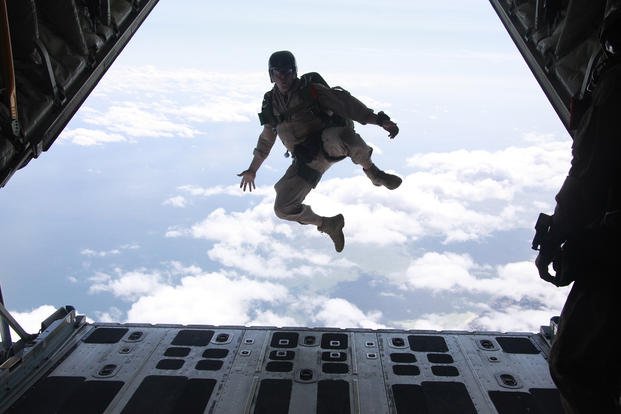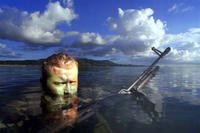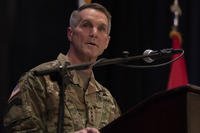TAMPA, Fla. -- Look for big changes in special operations forces as they shape for what's ahead after a dozen years of intensive, high-operational-tempo missions focused predominantly on Afghanistan and Iraq.
Commanders of the special operations components laid out their plans for the future to members of the special operations community and the defense industry last week during the 2013 Special Operations Forces Industry Conference here.
The Navy SEALs will undergo "an amphibious evolution in reverse," returning to their maritime roots, Navy Rear Adm. Sean A. Pybus, commander of Naval Special Warfare Command, told the assembly.
Army Special Forces will concentrate on rebuilding their regional expertise and relationships in parts of the world, Army Lt. Gen. Charles T. Cleveland, commander of U.S. Army Special Operations Command, said.
Air Force Special Operations Command will strive to rebalance its portfolio to provide broader support to geographic and theater special operations commanders, said Air Force Lt. Gen. Eric E. Fiel, the AFSOC commander.
And Marine Corps Special Forces Command, the newest of special operations components, will work to institute a cultural shift that maximizes the myriad technologies developed during the past decade-plus of conflict, Marine Corps Col. Mike Sweeney, the deputy MARSOC commander, told the group.
Navy Adm. William H. McRaven, U.S. Special Operations Command commander, opened the conference by telling participants to think of a future that extends beyond the high-profile missions heralded in best sellers and across the big screen.
"The fact of the matter is that [counterterrorism] piece that we do better than anybody in the world ... is a small part of our portfolio," he said. "The broader part of our portfolio is about how we build partner capacity [and] how we link with our allies and partners overseas so that we can help them take care of their problems so that we don't end up having to do [counterterrorism]."
U.S. special operators "will continue to take care of the bad guys and rescue the good guys better than anybody in the world.''
But by helping partner nations build their own capacity, McRaven said, "they can take care of their own security problems ...[and] do the things that we now don't have to put U.S. forces against. That is the value of U.S. special operations forces as we go forth in the future.''
That concept, encapsulated in McRaven's "Special Operations Forces 2020" vision, requires transition across the special operations service components.
Those changes are well underway in the SEALs, which Pybus said are expected to reduce the number of theater platoons in Afghanistan by at least half by the year's end.
"Our SEALs have been fighting two land wars for the last decade, and there is plenty of work back in the maritime environment," he said. "That is playing out before our eyes."
The drawdown in Afghanistan will free forces to support the U.S. strategic pivot toward Asia or demands in other parts of the world better, he said, citing examples of the Mediterranean Sea, the Gulf of Guinea or the Persian Gulf.
"There are plenty of things to do in support of our theater [special operations commanders] and all their requirements," he said.
The timing is right for most of the SEALs' return to the water, Pybus said, noting that by the end of the decade, 90% of the world's population will live in megacities on or near the coast.
"So it is the right time for one of the two maritime components of U.S. SOCOM to make sure that we are covering down on our obligation as a maritime special operations force,'' Pybus said.
For the Green Berets, Cleveland emphasized the importance of shoring up gaps in regional expertise due to the command's heavy focus on combat operations in the Middle East.
"We have these regionally expert forces, but we surged to Iraq and Afghanistan, and by necessity, we sacrificed over the past 12 years a knowledge and expertise that we need of the rest of the world," he said.
"That's not to say we don't have it. But we don't have it in the density that we need. And that is the gap we are going to work to fix."
Meanwhile, Army Special Operations Command, like its sister special operations component commands, is striving to preserve strides made in Iraq and Afghanistan.
"We cannot lose what we have developed over the last 12 years," Cleveland said. "We are taking steps to not do that."
Sustained combat operations served as a "forcing function" for special operators to work in synchronization with not only conventional forces, but also interagency and non-governmental organization partners, he said.
The challenge, once combat operations are over, is to maintain those bonds for the future, Cleveland said. He shared an observation by a State Department official who suggested forming a "league of extraordinary operators" who maintain a connection, rather than forming one when a crisis erupts.
"We ought not wait until we have to descend on a problem to create this connection and are starting to work on that," Cleveland said.
Regardless of where on the globe Army Special Forces operate, Cleveland said, "two exquisite capabilities" will remain paramount: surgical strike and special warfare. "The country needs both of these capabilities," he said, emphasizing the need to evolve continually for complex challenges that will test the mettle of the future force.
Fiel, commander of Air Force Special Operations Command, said he expects little letup in the years ahead for the command's highest-demand capabilities: mobility, strike and intelligence, surveillance and reconnaissance. Tasked by McRaven "to generate and sustain as much combat power as possible," Fiel said, he is working to rebalance the command's portfolio to better serve all theater special operations commanders.
Despite flying tactical missions every day in support of every geographic combatant commander and theater special operations commander, all want "more, more, more" capability, Fiel said.
New hardware entering the inventory is a step in the right direction, he said. Another big advance is the new Air Force Special Operations Warfare Center, stood up in February. Its mission includes executing special operations test, evaluation and lessons learned programs and developing doctrine, tactics, techniques and procedures for AFSOC.
Fiel shared Cleveland's assessment of progress made in building more cohesive and interconnected teams across the special operations force community.
"SOCOM and [special operations forces] is a team sport. It really is the only joint force in the Department of Defense. Sometimes you are on offensive, sometimes you are on defense, and sometimes you are on special teams," he said. "But we are the only force in the DoD that grows up together."
Since its activation in 2006, Marine Corps Forces Special Operations Command has hit the ground running with no pause in the pace of its operational missions. But looking ahead to a post-Afghanistan future, the command is preparing to transition from landlocked operations to future maritime missions around the world, Sweeney told the audience.
In another change to come, MARSOC plans to make its battalions regionally focused to support theater requirements better.
In posturing for that future, Sweeney said, the Marines hope to find better ways to integrate the kinds of technologies integrated into the battlefield in Afghanistan. If anything, Marine special operators are "too heavy on technology," he said.
"When I see our teams and our Marines out there, and they have to have five or six sets of equipment to access five or six networks, that is problematic," he said. "We are now increasing the burden on the force from a load perspective."
Ideally, Sweeney said, he would like to see one multi-tiered network that integrates these capabilities.
Another challenge, he said, is to change the culture to take full advantage of what technologies deliver. Sweeney likened the process of compiling multiple data streams to form one operational picture to the broadcast of a "Monday Night Football" game.
"I, as a consumer, see one picture, and that is the picture I want to see," he said. He recognized, however, that someone behind the scenes has made decisions, selecting views from 40 or more screens to deliver what the viewer sees.
"That type of talent is extremely difficult to build in the military," he said, emphasizing that it's not a job that should be relegated to a junior officer or a mid-level noncommissioned officer.
"That is somebody who is well-educated, understands the warfighting functions, can quickly assimilate information, turn it into knowledge and present it to the commander," he said. "It is very, very challenging to do."
The problem, Sweeney said, is that the military -- or at least the Marines -- doesn't emphasize developing those capabilities or rewarding those who have them.
"From the Marine Corps perspective, if you are an innovator, if you are a visionary, if you are a science-and-technology guy, you are probably not going to do well at the promotion board," he said. "What we owe you [in industry] and we owe ourselves is a culture and a mindset shift about how we go after capitalizing on the technology you provide and using that to our advantage to bring power to bear where it counts most."
Want to Know More About the Military?
Be sure to get the latest news about the U.S. military, as well as critical info about how to join and all the benefits of service. Subscribe to Military.com and receive customized updates delivered straight to your inbox.











